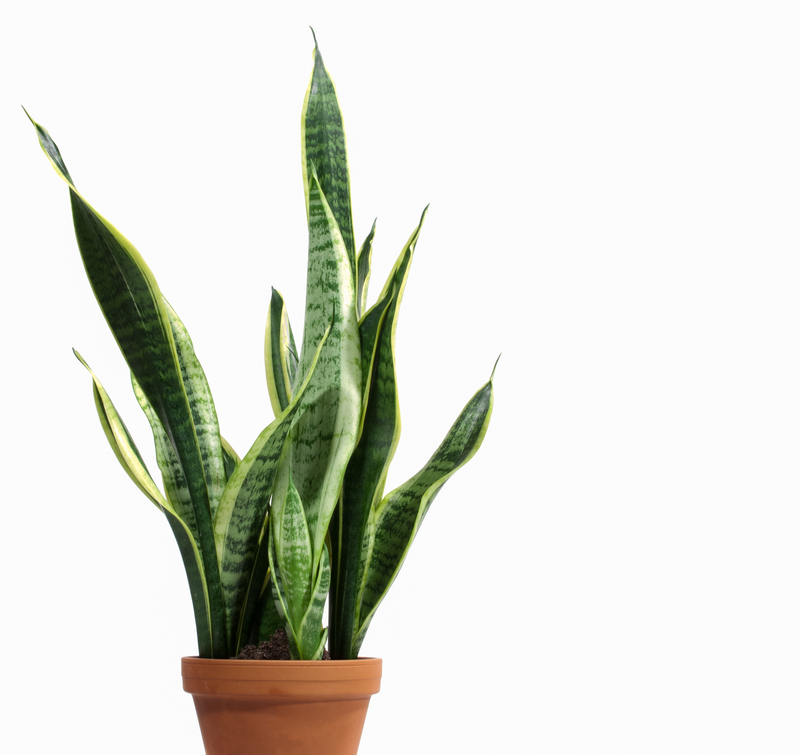Vertical Gardening: Expanding Horizons in Urban Spaces
Posted on 02/06/2025
Vertical Gardening: Expanding Horizons in Urban Spaces
Urbanization is shaping the future of our cities, but at what cost to green spaces? As concrete jungles expand, the significance of integrating nature into limited spaces becomes ever more crucial. Vertical gardening, or creating gardens that grow upwards instead of outwards, offers a sustainable, beautiful, and innovative solution to this modern problem. This comprehensive guide explores the many dimensions of vertical gardening and its transformative impact on urban environments.
What is Vertical Gardening?
Vertical gardening refers to the practice of cultivating plants on a vertically suspended panel, trellis, wall, or stacked arrangement, often using hydroponics or soil systems. This approach utilizes vertical space to maximize plant growth, making it ideal for urban gardening where land is scarce.
- Green Walls: These are large, often architectural, installations covered with plants and can be both indoor or outdoor.
- Vertical Planters & Pockets: Freestanding structures or wall-mounted pockets that can be easily installed on balconies, patios, or rooftops.
- Living Walls: A subset of green walls, typically combining plant species to create stunning, artful displays.

Why Vertical Gardening is Perfect for Urban Spaces
With cities growing denser every year, residents are often left with minimal space for gardening. Vertical gardens in urban spaces address key challenges by offering:
- Space Efficiency: Utilize unused vertical surfaces, balconies, or rooftops for greenery.
- Improved Air Quality: Plants act as natural air filters, helping combat urban pollution.
- Temperature Moderation: Green walls insulate buildings, reducing energy needs for heating and cooling.
- Enhanced Privacy: Living walls offer natural screening and privacy for apartment balconies or patios.
- Aesthetic Enhancement: Transform bland walls into lush, vibrant art pieces, elevating urban landscapes.
Methods and Systems for Vertical Gardens
There are various approaches to establishing a successful vertical garden. Choosing the right method depends on available space, maintenance commitment, and the types of plants desired.
1. Modular Green Wall Systems
Prefabricated panels, pots, or pockets are mounted onto walls, filled with soil or hydroponic media, and planted with various species. These systems are highly customizable and suitable for both indoor and outdoor installations.
2. Trellises and Espalier
Climbing plants and vines can be trained upwards on a trellis, wire, or grid. Espalier involves training trees or shrubs into flat, ornamental shapes, making an attractive green feature for limited spaces.
3. Stackable Containers and Pallet Gardens
Stacked planters or recycled wooden pallets can be repurposed as unique, flexible vertical gardening systems, ideal for herbs, lettuce, strawberries, and small flowers.
4. Hydroponic and Aeroponic Walls
These soil-less systems use nutrient-rich water to feed plants' roots, minimizing mess and allowing precise control over growth conditions. Hydroponic walls are popular in commercial and residential interiors for their tidy and modern aesthetic.
Key Benefits of Vertical Gardening in Urban Environments
The popularity of city gardening has exploded as the benefits of vertical gardens become widely recognized:
- Maximizes Limited Space: Perfect solution for apartments, condos, or houses with small yards.
- Enhances Urban Biodiversity: Supports pollinators and urban wildlife by introducing more plant species.
- Reduces Urban Heat Island Effect: Plant-covered surfaces help cool city environments naturally.
- Improves Mental Health: Access to greenery reduces stress and improves well-being for urban dwellers.
- Grows Edible Produce: Fresh herbs, greens, and even fruits can be grown steps from your kitchen.
Best Plants for Vertical Gardening
Selecting appropriate plants is crucial for a successful vertical garden in urban settings. Here are some top choices:
Ornamental Plants
- Pothos (Epipremnum aureum): Hardy, trailing vine with attractive variegated leaves.
- Spider Plant (Chlorophytum comosum): Adaptable, air-purifying, and easy to grow.
- Ferns: Add beautiful texture and thrive in shaded or low-light conditions.
- Philodendrons & Hoyas: Ideal for balconies, with trailing and climbing varieties.
Edible Plants & Herbs
- Lettuce & Spinach: Grow quickly in vertical planters; perfect for salads.
- Herbs (Basil, Mint, Thyme, Parsley): Compact root systems suit smaller growing pockets.
- Strawberries: Prolific fruiting and attractive ground cover.
- Tomatoes & Peppers: Dwarf varieties do well in stackable pots or hydroponic walls.
Flowering Plants
- Petunias & Pansies: Add color and attract pollinators.
- Begonias: Thrive in partial shade, suitable for balconies facing east or north.
- Lobelia & Nasturtium: Cascading flowers for striking visual effects.
How to Start Your Own Vertical Garden in the City
Ready to zero in on vertical gardening solutions for urban spaces? Here's a step-by-step guide:
Step 1: Assess Your Space
- Sunlight exposure: Choose a location based on how much light your chosen plants require.
- Structural support: Ensure that your chosen wall or area can bear the weight of the soil, plants, and water.
Step 2: Choose a Vertical Gardening System
- Pocket panels for herbs and small flowers.
- Trellises for climbers and vines.
- DIY pallet gardens for affordable, rustic setups.
- Modular kits for flexibility and easy expansion.
Step 3: Select Suitable Plants
- Match plant needs with your home's environmental conditions.
- Consider a mix of foliage, flowers, and edibles for diversity.
Step 4: Install and Plant
- Install mounting brackets or panels securely.
- Plant seeds or seedlings according to specifications for each species.
- Design irrigation for easy watering--drip systems or self-watering mats work well.
Step 5: Maintenance
- Monitor soil moisture, fertilize as needed, and prune regularly.
- Inspect for pests and diseases, especially in dense vertical setups.
Innovations and Trends in Urban Vertical Gardening
Urban vertical gardening techniques continually evolve, integrating technology, fine arts, and sustainability. Emerging trends include:
- Smart Gardens: Automated systems control watering, nutrients, and lighting, enabling hands-off maintenance.
- Community Vertical Farms: Shared rooftop or wall gardens foster neighbors' collaboration, local food supply, and social interaction.
- Edible Green Walls: Vertical plots dedicated entirely to herbs, leafy greens, fruits, and vegetables--transforming bare walls into bountiful harvests.
- Biophilic Design Integration: Modern offices and buildings embrace vertical greenery as part of their architectural identity, enhancing occupants' health and productivity.
Challenges and Solutions in Urban Vertical Gardens
Like any gardening method, vertical gardening in cities comes with its challenges. Solutions, however, are readily available:
- Weight Management: Use lightweight media and containers; reinforce mounting systems for safety.
- Irrigation Issues: Employ drip lines, automatic watering, or regular manual checks to prevent both under- and over-watering.
- Pest Control: Dense foliage can harbor pests--integrated pest management and regular inspection are essential.
- Plant Selection: Choose hardy, low-maintenance species for easy care, especially in tricky or highly exposed city sites.
Real-World Examples of Urban Vertical Gardens
- Singapore's Supertree Grove: Futuristic towers covered with exotic plants create an iconic, sustainable city landmark.
- Musee du Quai Branly Green Wall (Paris): Patrick Blanc's 15,000-plant installation purifies air and creates breathtaking beauty on a grand urban scale.
- Local Initiatives: Many cities encourage small-scale vertical gardening projects in schools, public housing, and community centers.
Eco-Friendly Impact of Vertical Gardening
In addition to their aesthetic and space-saving advantages, vertical gardens have a significant environmental impact:
- Enhance Urban Air Quality: Green walls act like urban lungs, absorbing CO2 and pollutants.
- Stormwater Management: Plant-covered surfaces help absorb rainwater, reducing runoff in cities with lots of hard surfaces.
- Biodiversity Corridors: Vertical green spaces connect fragmented habitats, fostering urban wildlife and pollinators.
- Noise Reduction: Living walls dampen street noise, creating quieter indoor and outdoor urban environments.

Tips for a Thriving Urban Vertical Garden
- Start Small: Begin with one panel or a few containers, then expand as you gain confidence.
- Mix Plants: Combine low-maintenance foliage with colorful flowers and edible herbs for year-round interest and function.
- Regular Monitoring: Urban environments can be harsh; check your vertical garden weekly for moisture, pests, and plant health.
- Use Quality Soil or Substrate: Good drainage and nutrient content are crucial for vertical success.
- Involve the Community: Share your experience or start a collaborative project to green your neighborhood together.
Conclusion: Transforming Urban Life with Vertical Gardening
Vertical gardening is more than a trendy gardening method--it's a revolutionary approach to reconnecting cities and people with nature. By embracing a variety of vertical gardening techniques, city dwellers can cultivate beauty, health, sustainability, and food security even amidst the densest urban cores.
Whether you are a seasoned green thumb, beginner, or urban planner, the possibilities of vertical gardening are only limited by your imagination. Start small or dream big--either way, you will play a part in expanding the horizons of urban spaces and creating greener, healthier cities for generations to come.
Frequently Asked Questions (FAQ) About Vertical Gardening in Urban Areas
- Q: Can vertical gardens thrive indoors?
A: Absolutely! Many vertical gardening systems are designed for apartments and office interiors, using shade-tolerant plants and artificial lighting if necessary. - Q: What is the best watering system for a city vertical garden?
A: Drip irrigation or self-watering panels ensure consistent moisture and reduce maintenance. - Q: Do vertical gardens attract pests in urban environments?
A: Like any garden, they can attract pests, but regular inspection and natural pest controls keep issues manageable.
Start your vertical gardening journey today and transform your urban surroundings into lush, vibrant living spaces!

